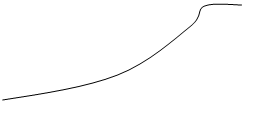This set of Food Engineering Multiple Choice Questions & Answers (MCQs) focuses on “Unit Operations – Sedimentation and Centrifuge-1”.
1. Sedimentation and centrifugation involve two miscible phases.
a) True
b) False
View Answer
Explanation: Sedimentation and centrifugation involve two immiscible phases.
2. Which of the following does the terminal velocity of a particle NOT depend on?
a) Density of fluid and particle
b) Shape of the particle
c) Viscosity of the fluid
d) None of the mentioned
View Answer
Explanation: The terminal velocity of a particle depends on all the mentioned factors.
3. With respect to Sedimentation, the boundary between the thick suspension and solids will be decreasing and that between the clear liquid and the thick suspension will be increasing with the passage of time.
a) True
b) False
View Answer
Explanation: With respect to Sedimentation, the boundary between the thick suspension and solids will be increasing and that between the clear liquid and the thick suspension will be decreasing with the passage of time.
4. In sedimentation, l – clear liquid zone, t- thick suspension zone, s- solid zone. Which of the following curve with height of the interface as the y-axis and the time as the x-axis represent the s-t interface?

a) a
b) b
c) neither a or b
d) a & b
View Answer
Explanation: The s-t interface increase with time and then slightly decreases.
5. In sedimentation, l – clear liquid zone, t- thick suspension zone, s- solid zone. With concentration of solids as the y-axis and the time as the x-axis, which curve does the following represent?

a) l-t interface
b) t-s interface
c) t zone
d) none of the mentioned
View Answer
Explanation: The above curve shows the t-s interface. The concentration of solids increases and then becomes constant.
6. The experimental details of the batch sedimentation experiment are comprehended by plotting which of the following two?
a) Height of interface against time
b) Concentration of solids against time
c) Settling rate vs slurry concentration
d) All of the mentioned
View Answer
Explanation: Height of interface against time is plotted to comprehend the batch sedimentation experiment.
7. Statement 1: For calculating the minimum thickener area, the angle bisector method is used.
Statement 2: In the angle bisector method, the point obtained the curve and the corresponding time is the time when the solids enter the compression zone.
a) True, False
b) True, True
c) False, False
d) False, True
View Answer
Explanation: For calculating the minimum thickener area, the angle bisector method is used. In the angle bisector method, the point obtained the curve and the corresponding time is the time when the solids enter the compression zone.
8. The compression zone in batch sedimentation is considered the overflow.
a) True
b) False
View Answer
Explanation: The compression zone in batch sedimentation is considered the underflow.
9. Dorr-Oliver thickener is also called a _____
a) Continuous thickener
b) Raker
c) Continuous thickener & Raker
d) None of the mentioned
View Answer
Explanation: Dorr-Oliver thickener is a continuous thickener which is also called a raker because of its extremely slow stirrer.
10. Which of the following is an application of sedimentation in the food industry?
a) Effluent treatment plant
b) Settling of dust on fruits
c) Effluent treatment plant & Settling of dust on fruits
d) None of the mentioned
View Answer
Explanation: Both of the mentioned, desludging of waters in the effluent treatment plant and settling of dust particles present on fruits are the applications of sedimentation.
Sanfoundry Global Education & Learning Series – Food Engineering.
To practice all areas of Food Engineering, here is complete set of 1000+ Multiple Choice Questions and Answers.
If you find a mistake in question / option / answer, kindly take a screenshot and email to [email protected]
- Check Agricultural Engineering Books
- Check Food Engineering Books
- Apply for Agricultural Engineering Internship
- Practice Agricultural Engineering MCQs
